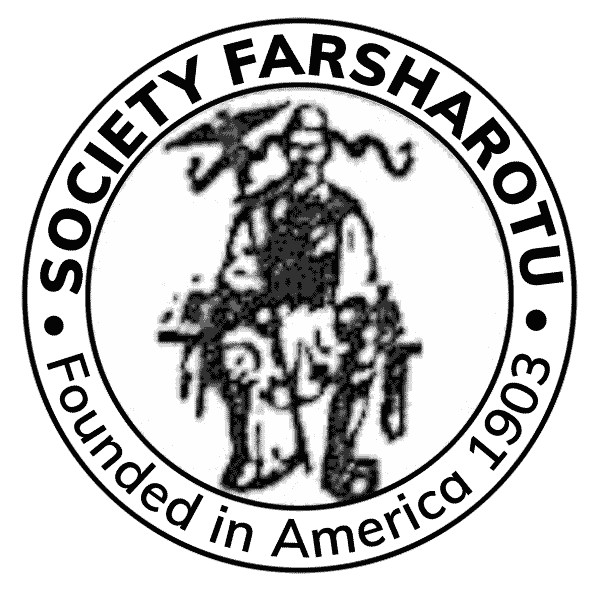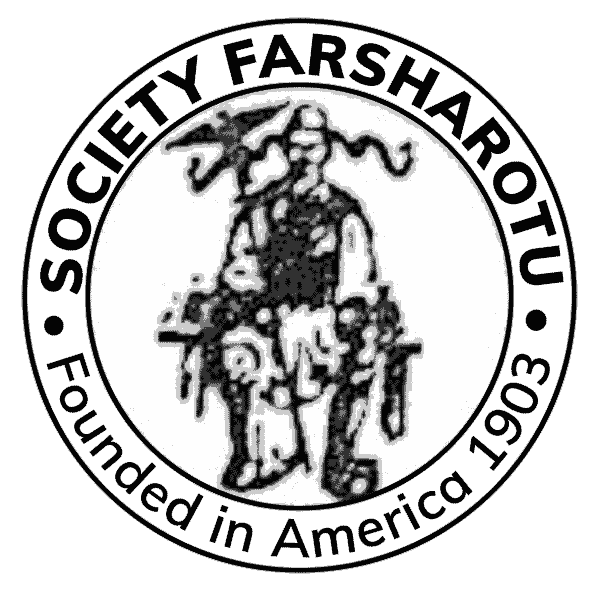Did You Know What Others Have to Say about Us?
Contemporary Greek folk music is related to both classical Greek and Byzantine church music. Certain folk dance types and their musical meters are directly related to classical ones, while certain modes and melodic characteristics, with their inherent ornamental techniques, are largely derived from Byzantine ecclesiastic music. In a description of Greek music and the numerous traditions surrounding it, one cannot isolate a specific type or style of folk music which can be considered common to the whole of Greece. Several stylistically distinct music types have developed as a result of the geographical position of Greece in relation to the other Balkan nations and to those bordering the eastern Mediterranean Sea. Other factors contributing to the complexity of musical styles are the presence of ethnic groups such as the Vlachs, Sarakatsans, and Karagounides; the enforced immigration to Greece in 1922 of Greeks living in Asia Minor, and the numerous physical and social barriers that tend to isolate villages and entire regions from one another…
The folk music of Thessaly is, by and large, a composite of the musical styles found in Epiros, Roumeli, and western Macedonia. Pentatonic modes as well as diatonic and chromatic ones are used in both vocal and instrumental music. The unique dance songs and general folk repertory of this region are largely due to the extensive concentration of Vlachs and Karagounides.
–“Greek Folk Music: Style, Repertory, and Instruments” by Sotirios Chianis, in Greek Music Tour (National Endownment for the Arts & Ethnic Folk Arts Center: Winter 1982 – Spring 1983).
Some idea of what gracious living was like in Metsovo in Ottoman times can be gleaned from the house of the Tositsa family, who made their fortunes in cotton in Egypt. Together with the Averoffs, another powerful clan from the region, they established a foundation which is a principal source of wealth and patronage in the village. The mansion of Michael Tositsa is now a museum, and one of the finest examples of late Ottoman housing still in existence in Europe.
Outside the house is adorned with wooden ornaments, shutters and casements; within are divans and recesses, including a tiny minstrel’s gallery for a Gypsy band–well away from the bed, lest their presence proved too noisome. Exquisite minatures, chests for dowries (still common in the village), accoutrements, ornaments, arms–among them an axe belonging to Ali Pasha of Ioannina–all tell the story of the shepherds and their martial lords. A naive painting chronicles the almost obligatory tale of romance and brigandage–the kidnap and ransom in 1884 of Evdokia or ‘Doukou’, beloved daughter of Nicholas Averoff…
The warm woollen skirts and exquisitely embroidered and braided bodices have become a craft industry promoted by the Tositsa-Averoff Foundation and one year the entire stock was bought for the Paris collections by Yves Saint Laurent…
—The Inner Sea: The Mediterranean and Its People, Robert Fox, 1993, New York.
Even more dislocating than brigandage and indiscriminate animal lifting and slaughtering was the division of the vital territory of nomadic pastoralism by national boundaries, separating perenially hostile states. The first Greek-Turkish frontier (1830) ran through continental Greece and harmed migratory shepherds in at least two ways: (a) it increased the cost of the seasonal movements of the flocks as the shepherds were obliged to pay, in addition to the regular sheep tax, a certain duty on crossing from one state to the other, and (b) it contributed to the dispossession of the shepherd by the frontier guards and other state officials, on the border…
This drain on the migratory shepherds resources became almost prohibitive after the annexation of Thessaly and the district of Arta to Greece in 1881, and the consequent separation of the main winter grazing areas from the mountains of Epirus and southern Macedonia, which remained in Turkish hands until 1912. As already seen, many Pindus Vlahs opposed the annexation for obvious reasons, only to be condemned by nationalist circles in Greece as traitors deserving the nation’s scorn.
—Brigands With A Cause: Brigandage and Irredentism in Modern Greece 1821 – 1912, John S. Koliopoulos, 1987, New York.
[Mrs. West touring Skopje with a Professor of Ethnology from the University]
…He showed us also a superb being, like a Cossack in a Russian ballet, who went by in a wide-skirted coat made from the wool of a brown sheep. This, he told us, was a wealthy Tsintsar, a true nomad, who moved with his herds between summer and winter pastures and hoarded all his wealth, according to nomadic fashion, in the form of necklaces and bracelets worn by his womenfolk.
—Black Lamb and Grey Falcon, Rebecca West, 1982, New York.
The heartland of the Vlachs is the central Pindus. Here the language has still a reasonable strong foothold, with Vlach publications and cultural festivals. But it is not so flourishing elsewhere. The scattered herdsmen suffered dreadfully during the Second Balkan War in 1911-12 when they and their animals where massacred by armed bands of Bulgarians, Greeks and Serbs in the bloody conflict over Macedonia. Then there was scarcely time to recover before the horrors of the Axis Occupation, where to begin with the Bulgarians again played a nefarious role, followed by the extortions of the anti-Communist forces. Many of the naturally anti-authoritarian Vlachs tended to support the Left–although a few were lured into a ‘Roman legion’ by Italian fascists–and they all suffered in the Greek equivalent of the Highland Clearances organized from Athens. As a result, many northern cities have a substantial Vlach population, as Athens does itself, and towns in Thessaly, too… Vlachs are famous metal workers and carpenters and in Yannina and other northern regional centres a walk through the bazaar or street market is a sure way to find them at work.
—The Greeks: The Land and the People Since the Last War,
James Pettifer, 1993, London.
The company had to deal, of course, with the troubles of brigands in old days, a problem which they solved effectively by making most of the men concerned into watchman; and they also have to keep a working understanding with the Vlachs. This very interesting people are not Greek at all–though they are presumably Greek subjects now… Though gipsy-like, they are shepherds by business, and their tribal name has become a sort of synonym for that ancient profession. They come down into a district where they have a traditional right right to camp, build huts for themselves and for their flocks the odd circular folds that will protect their sheep in any weather, and so remain till spring calls them to their northern camping ground again. Some of them have taken and are taking to village life in these days. Generally, they are a people kindly as they are picturesque, patriarchally hospitable and good sportsmen, as many an English Consul knows, and by no means ill favoured.
—Hellenic Travel, A.A. Wigram, mcmli, Glasgow
Whatever their origins, the Vlahs have clung fiercely together, despite sporadic attacks on their culture by more nationalistic Greek governments…
Organized tourist buses stop in Metsovo daily during the summer and the souvenir shops around the main platia are kept busy, leading some to claim that Metsovo practices ‘tradition for tourism’s sake.’ This is hardly a fair acusation as anyone who arrives outside the summer months will see, but there are many facilities for tourists…
Several shops sell Metsovo cheese, an absolute must for anyone who likes their cheese hard and tasty… Metsovo honey is also a popular buy. Note the carpentry workshops where the old Vlahi art of woodcarving is still practiced. Some of the work is superb…
Other places of interest … include an art gallery featuring the works of contemporary Greek artists and, besides the clock tower, the fifteenth century church of Agai Paraskevi…
A 15 minute walk down the hillside leads to the small and serene monastery of Agios Nikoloas. Ring the bell for the caretaker who is happy to open the chapel to allow visitors to see the beautiful post-Byzantine frescoes painted there.
—Off the Beaten Track: Greece, by Geoffrey Brown, 1991 – U.K.
In this same period [early 17th century], many people settled down on the outskirts of Thessalonica in Asvestochorion (Kirets-Kioi) to the south of a church beside the rill known as Vlachikos Lakkos. Apparently they still spoke Vlach. They were craftsmen–tailors, dyers, jewellers, shoemakers, and so on. They were also more civilized than the local inhabitants, to whom they referred disparagingly as “peasants.”
The people of the Agrafa…moved to the east across the Sea of Marmara and colonized villages along the coast of Asia Minor. Others went north and settled in Philippopolis (now Plovdiv) where there were also Greek immigrants from Epirus, Moschopolis (the exodus from this city was occasioned by its destruction), Rhodes, and the district of Stenemachos. However, most of the migrants from the Agrafa went enven further north to the Danubian principalities, where their Latin dialect apparently facilitated intercourse with the indigenous peoples of those lands, During the seventeenth and eighteenth centuries, as evidence of their prosperity, these expatriates built handsome homes and beautiful churches in the Agrafa, the Aspropotamos, and generally throughout the Pindus and its spurs. These churches still serve as reminders of the close relationships between the Greeks from the Agrafa and the countries to which they migrated, notably Rumania.
—The Greek Nation: 1453-1669, Apostolos E. Vacalopoulos (New Jersey, 1976).


Responses